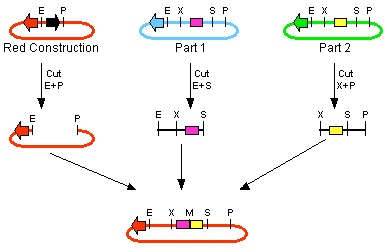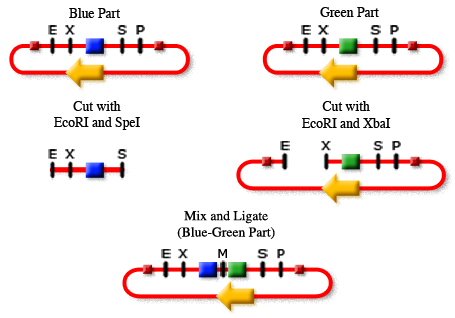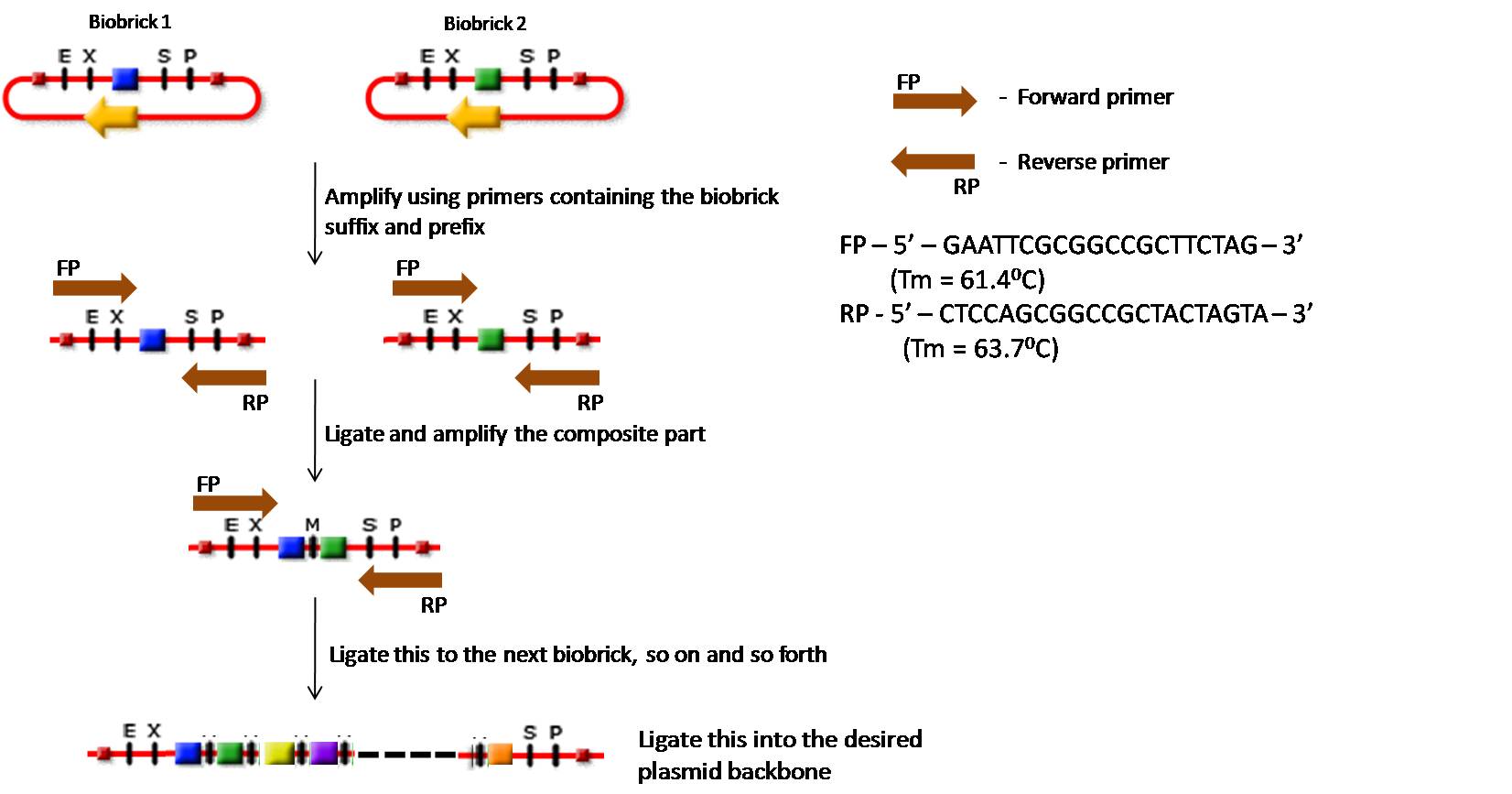Team:IIT Madras/Workplan
From 2009.igem.org
Work Plan
Building the constructs
We have been following 3 different strategies to build our constructs.
1. The 3A assembly
Fig 5.1: The 3A assembly
2. The 2A or Standard Assembly
Fig 5.2: The 2A or Standard Assembly
3. PCR based approach: We plan to proceed with the experiment using a PCR based amplification system, followed by a specific restriction digest and subsequent ligation.
This strategy saves a lot of time in cloning the parts together. All it takes is a PCR, a purification step, digestion and ligation. This strategy takes much less time in comparision with the traditional cloning steps using bacteria. Moreover, this process can be automated to ligate a huge number of parts together in a short period of time. It saves the labor of dealing with bacteria for amplifying the required insert after each ligation.
Fig 5.3: PCR based approach
Working with the constructs
We will be performing a proof-of-concept experiment using the 2 plasmids - K272001 and K272002. The cells will be co-transformed with the plasmids. Each of these plasmids have a different fluorescent reporter and their backbones have different antibiotic resistances. However, the origins of replication in both the plasmids are the same, thus making the plasmids compete with each other in order to remain in the cell based on the selection pressures. The bacteria "titrates" the number of plasmids with a certain origin of replication before each replication. Thus if there are a couple of plasmids with the same origin of replication, and one of them happens to be non essential and does not confer any advantage to the cell for a given growth condition it will eventually be phased out from the population. This is essentially mimicking natural selection. The fluorescent reporters will help in tracing which plasmid is phasing out for a given set of growth conditions.
The cotransformed cells will be grown in different antibiotic media (in our case - Ampicillin, Chloramphenicol and both Ampicillin and Chloramphenicol) and the loss of each plasmid will be studied using fluorescent markers under a microscope. Presently we are working with the K272001 (constitutive RFP) in pSB1C3 and K272002 (constitutive CFP) in pSB1A2. We expect to see that the co-transformed cells when grown in a medium with both chloramphenicol and ampicillin should have more number of cells with both the fluorescent reporters than with those which are grown in medium containing either or none of the antibiotics. Specifically, if the cells are grown in medium containing only ampicillin, then the number of cells without CFP should increase and when grown in the absence of chloramphenicol, the number of cells without RFP should be on the rise.
Fig 6: The cotransformed cells when grown in different antibiotic media, show different fates. For instance, when the cells are grown in medium containing Ampicillin but not Chloramphenicol, the lack of selection pressure due to chloramphenicol on the cells leads to a gradual phasing out of those cells which contain both the plasmids. Only those with the Ampicillin selection marker eventually dominate the population.
The constructs required to demonstrate the locking property are being built and will be tested once the construction is done.
 "
"










